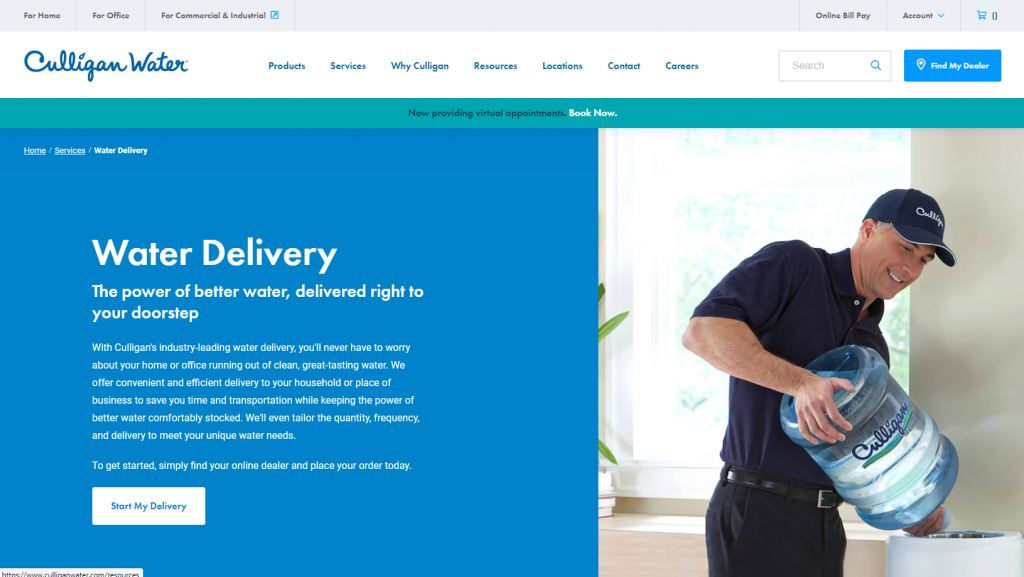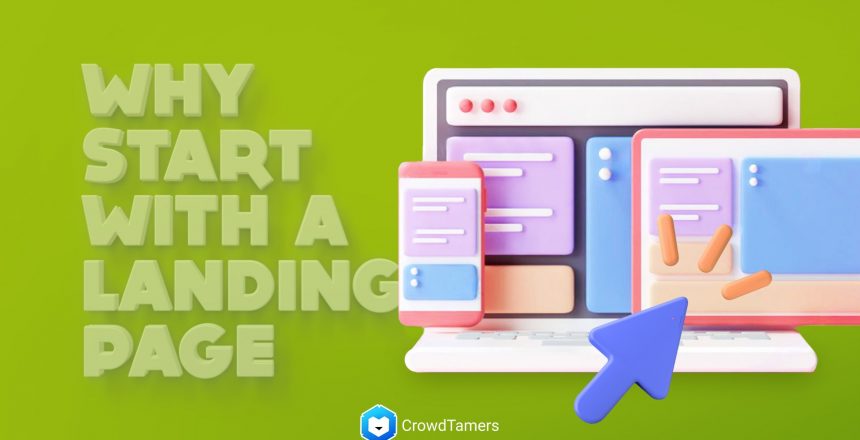Building products is hard. Launching a new business is hard. Everything about it is confounding: you deliberately create order out of nothing. As the founder, you have to conceive something that doesn’t exist and, through hard work and unwavering belief, bring it into existence.
If you’re wrong about your business idea: the timing, the positioning, or any detail about it, you will probably end with a failed company, broke, and scrambling for a job to pay the rent. It’s no wonder that nearly 3/4ths of founders have a mental health issue.
The whole premise of CrowdTamers as a company is that it’s easy to reduce the risk of launching businesses in a number of ways, but the best way I’ve found to do it is to find a way to see what the business would be like before you commit to it.
We date before we marry because marriage is a big life decision. I’ve been married 21 years now, and even though we only dated for 5 months before we got married, we’d already moved in together and thought we’d tested a lot of what life would throw at us before we got hitched.
Business is a big life decision, too. How do you simulate that “moving in together and figuring out how it’s going to work before you commit fully?”
For many businesses, the majority of your customer’s first impressions of you will happen online through your ads and your website. So try out what that would work like first.
Landing pages are like dating your business
Set up everything like it’s a real business. Give it space on the Internet like it’s a new small company with a website, social handles, email addresses, and so on. And launch it long before you ever write a line of code or buy your first inventory.
The simplest version of this is a landing page. A few simple sections, some nice graphics, and you and your business idea are shacking up, seeing how you fit together. You can do this while you’re still working somewhere else full-time for maximum security. Don’t leave the sure thing of your salary behind before you know that your business can do what you need it to.
The landing page is both the simplest form of your business and a very complex item to create. On the one hand, you need maybe 500 words total to make a landing page an effective first statement of your company, its purpose, and why someone should buy from you. On the other hand, finding the right 500 words can be agonizing.
The use of a landing page to validate your business
Once you’ve built your landing page, what is the use for it?
As I’ve written elsewhere, a business at its core consists of 3 things:
- A problem
- An audience
- An offer
When you’re creating a new business, you’re solving all 3 of these problems. It may seem like a landing page only addresses the third point in this triangle, but it actually addresses all 3. Your offer (or landing page) will only work when you know exactly what problem an audience has.
Building the problem from the offer
When you build your landing page, you’re doing so with the first concept of your offer. You have a cargo van and want to buy an old bottling plant that’s shut down at the end of town. You come up with a business idea: home delivery of water bottles.
- A problem
- An audience
- An offer – home-delivery of water bottles
Knowing the service that you want to offer gives you a lens to use when you’re looking to define the problem that you can solve. If you want to offer home delivery of water bottles, you probably aren’t solving the problem of high rents in city cores. So what are you solving?
Well, people don’t drink enough water, generally speaking, so it’s a good reminder to knock on their doors and try to remind them to drink more, right? The market problem is that too many people are going through their days dehydrated. And you’re solving it with door-to-door water delivery.
- A problem – People don’t drink enough water
- An audience –
- An offer – home-delivery of water bottles
So now you know your problem and your offer…
…you can build your first landing page.

Seems legit. You’ve got a signup form for now—you haven’t bought the actual bottling plant yet, recall—and you can see if you find an audience.
I’ve written about the two ways I like to validate my audience for a business: paid performance and social distribution. You can try either or both, depending on how much money you have to invest in learning about your product launch versus how much time you can afford to devote to it.
Either way, you test this idea, though, you’re going to find that this is just….not a good idea. You won’t get anything like the metrics I like to see in terms of performance (2% click on the message and >5% signup on the landing page)
No one wants this.
If you knock on someone’s front door and try to sell them a bottle of water, you’ll probably fail. They have water in their tap, you’ve interrupted their day, they weren’t thirsty at the moment, and you’d need to charge a pretty high premium (like $40 a bottle?) for your water bottle because very few people would buy it.
Good thing we haven’t bought that water bottling plant yet.
Refining the problem
This business probably fails at all 3 key levels.
- The problem and the offer aren’t related.
- Where would you find people who are thirsty but can’t figure out how to fix that?
- The offer is priced prohibitively high compared to the incumbent offer of “tap water”.
So back to brass tacks: what can you offer? Individual water bottles are quite cheap to make, but they’re also very laborious to transport and generate a tremendous amount of waste. In the average bottle of water, the water itself costs about $0.00001, and the plastic costs about $0.12. The labor involved in going door to door and selling water bottles (unsuccessfully) is tremendous, though.
So if water is free, and plastic is nearly free, how do you reduce the one main cost in your offer—labor? Self-driving water trucks aren’t a thing yet, so what if you sold the water online and then delivered it only after someone bought it.
Even better yet, what if you sold it as a subscription service? Then your labor is only tied up in delivering already sold products, which is much more efficient, and the subscription makes labor forecasts very reliable. This brings costs way down!
And then, to reduce waste, if you made that bottle of water really, really big and re-usable, you could address the other side of the offer; we’re making bottled water clean and eco-friendly!
Now this looks like this:
- A problem –
- An audience –
- An offer – eco-friendly water subscription delivered right to your home
Now you need a problem.
Water comes out of the tap for basically free. You can’t compete on price here. You have to compete on either emotion or social proof.
What if you persuaded people that their tap water isn’t clean? That city water treatments strip out vital minerals that promote good health? Are these claims true? That’s not the point of an emotional appeal. You could make the logical argument either way, really, on water cleanliness in most houses in the US. But if your product is cleaner than what’s acceptable from your average house tap, you can 100% make an emotional appeal that’s very convincing.
And you can get some testimonials to make it obvious that this water tastes better and leaves you feeling great.
- A problem – Tap water at home is icky & you deserve a better drink
- An audience –
- An offer – eco-friendly water delivered right to your home
The offer—let me sell you some water in a bottle instead of the water you already have in your tap—is the same, but the audience and the problem changed completely.
Now some audiences suggest themselves: you’re not selling to people too dumb to remember to drink water. You’re selling to two types of people. People without access to good clean water to drink out of their homes or people who feel that they don’t.

There are a ton of people you can message and find pain around cleanliness and food safety. Some of which are new parents, wealthy health-conscious people, and many other self-identified groups. Go find them on Twitter or Reddit, or Facebook.
- A problem – Tap water at home is icky & you deserve a better drink
- An audience – People who want to be healthy and are afraid of water contamination
- An offer – eco-friendly water delivered right to your home
Incidentally, you may have realized by now, but we’ve just reinvented the delivery water cooler business, a $1BB annual industry.

Whoops. I guess @heyCulligan better watch out.
The phenomenal power of landing pages
It’s easy to change your business model when all you have is a landing page.
It’s easy to swap out problem, audience, and offer endlessly until you find something that works.
You start with a landing page because it’s the cheapest, fastest, easiest way to launch an idea that fails.
(Because most ideas fail,)
And then launch another one that fails. And yet another.
Till finally, you launch one that succeeds.
Now go build it.



